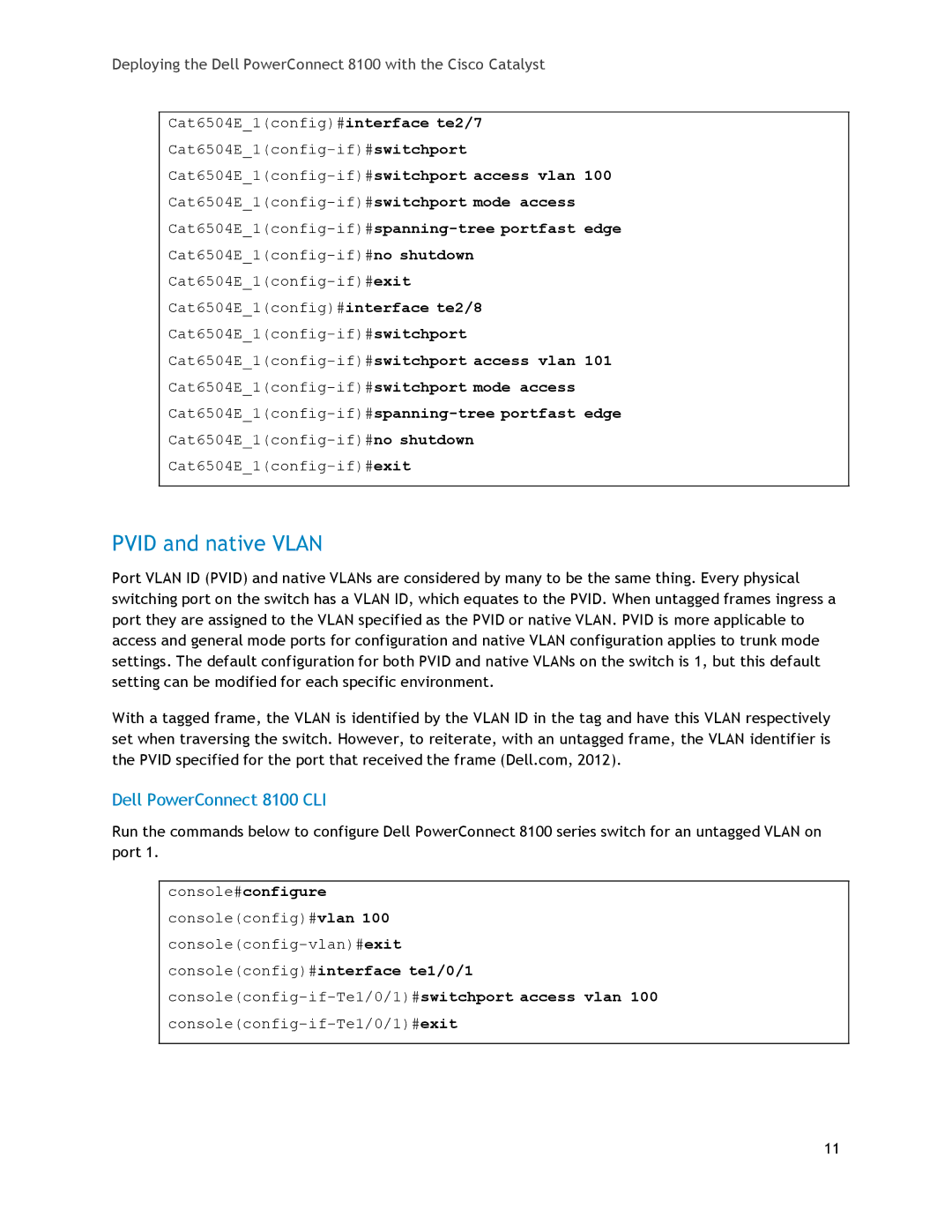
Deploying the Dell PowerConnect 8100 with the Cisco Catalyst
Cat6504E_1(config)#interface te2/7
Cat6504E_1(config-if)#spanning-tree portfast edge
Cat6504E_1(config)#interface te2/8
PVID and native VLAN
Port VLAN ID (PVID) and native VLANs are considered by many to be the same thing. Every physical switching port on the switch has a VLAN ID, which equates to the PVID. When untagged frames ingress a port they are assigned to the VLAN specified as the PVID or native VLAN. PVID is more applicable to access and general mode ports for configuration and native VLAN configuration applies to trunk mode settings. The default configuration for both PVID and native VLANs on the switch is 1, but this default setting can be modified for each specific environment.
With a tagged frame, the VLAN is identified by the VLAN ID in the tag and have this VLAN respectively set when traversing the switch. However, to reiterate, with an untagged frame, the VLAN identifier is the PVID specified for the port that received the frame (Dell.com, 2012).
Dell PowerConnect 8100 CLI
Run the commands below to configure Dell PowerConnect 8100 series switch for an untagged VLAN on port 1.
console#configure
console(config)#vlan 100
console(config)#interface te1/0/1
11
